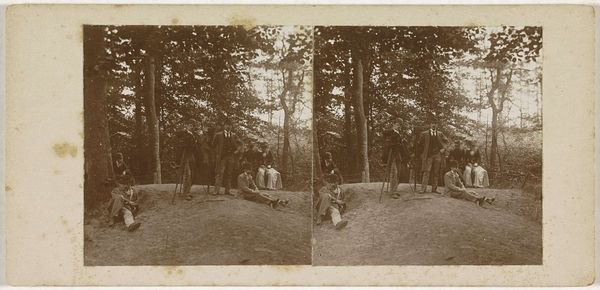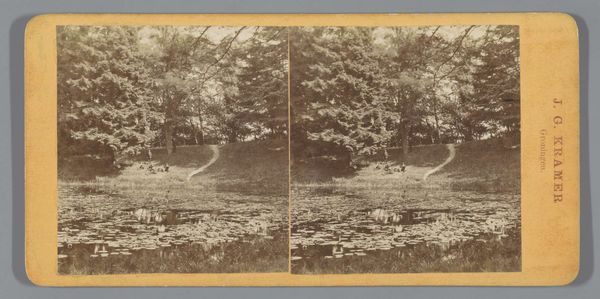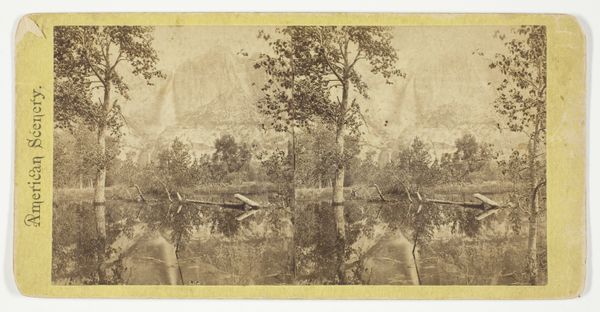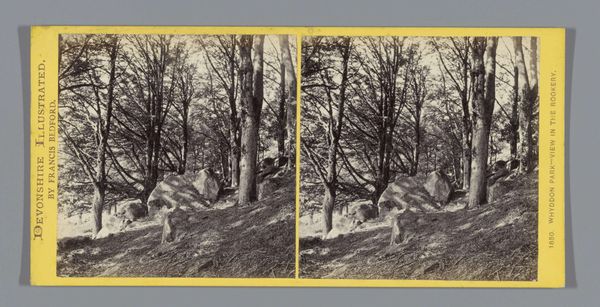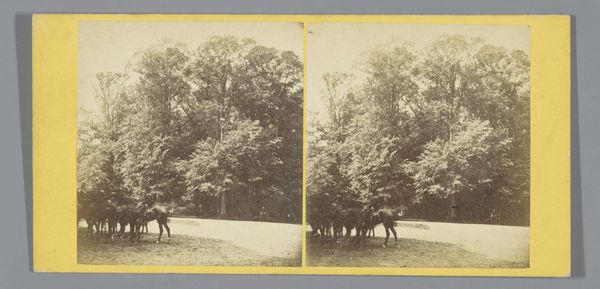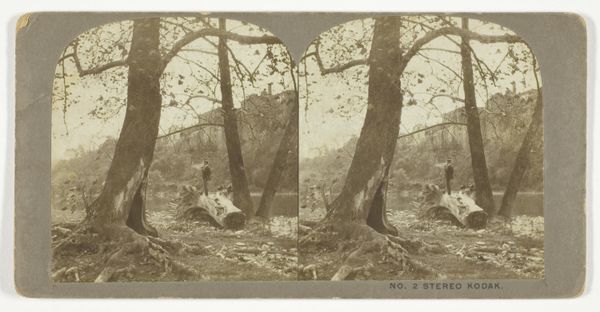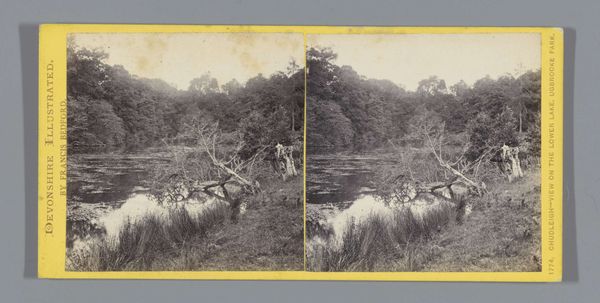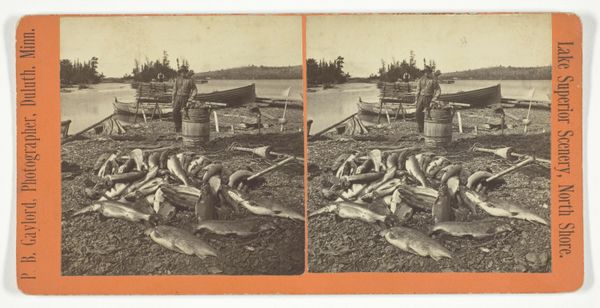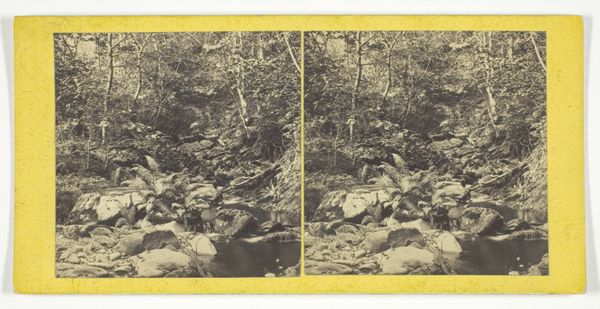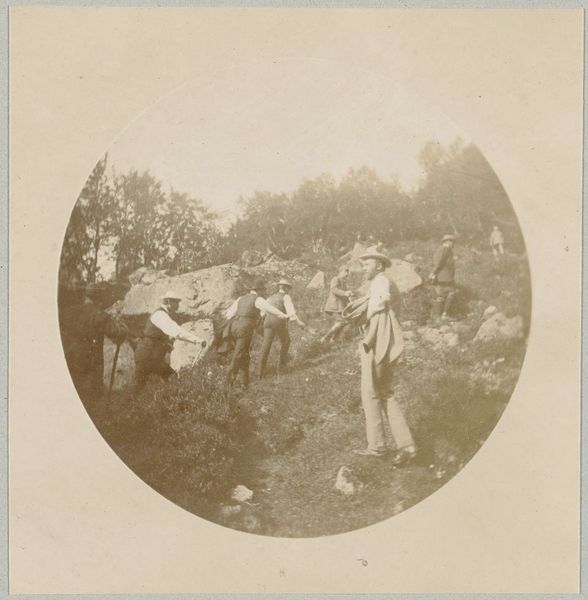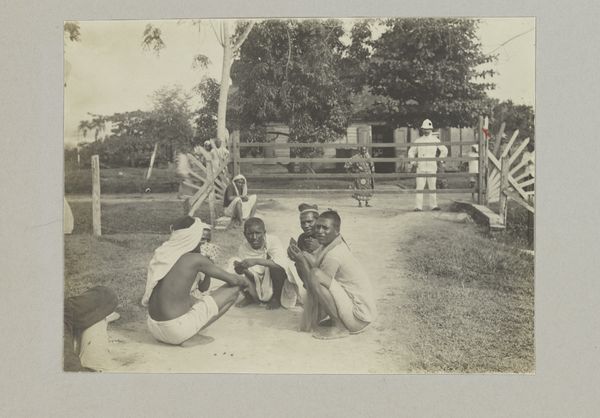
print, photography, gelatin-silver-print
#
16_19th-century
# print
#
landscape
#
photography
#
gelatin-silver-print
#
men
#
united-states
#
history-painting
#
realism
Dimensions: 8.1 × 7.6 cm (each image); 8.6 × 17.5 cm (card)
Copyright: Public Domain
Curator: This striking gelatin silver print, entitled "Successful Hunters dressing Elk", was produced in 1876 by William I. Marshall. It’s quite a scene. What’s your initial response to it? Editor: It’s brutal, isn’t it? A tableau of colonial domination rendered in stark monochrome. The bodies of the elk strewn across the grass, a violent assertion of power. Curator: Yes, there’s a visual bluntness that’s hard to ignore. The fallen elk, for me, evoke vulnerability and the end of something, of course, but also the circle of life in these wilderness scenes. Consider the photographic printing process itself, rendering depth and contrast from light and shadow... Editor: It’s interesting you mention the contrast, as the sharp delineation feels purposeful, underscoring the separation between the 'civilized' hunters and the 'defeated' wild. Look how the two figures are framed, actively working amidst their kills, claiming their spoils. What sort of messages does this imagery project? Curator: Indeed, Marshall was keen to highlight the progress of man. The very act of documenting the scene through photography lends it an air of 'truth,' seemingly endorsing that message of conquest. It serves, in some way, to glorify the expansion and perceived control of the land. Editor: It is certainly part of that complex history of the West, marking both exploration and exploitation, as well as commodification through the making of ‘Yellowstone Views’ for the tourist market, advertised here. Who were the recipients and consumers of such depictions? Curator: This particular image evokes questions about cultural memory and shifting landscapes. What do we, as viewers now, project back onto such images? The slain Elk serve as powerful emblems, evoking wilderness but also ecological transformation. Editor: The act of preservation implicit in cataloging these “views” jars with the destructive nature of the hunt pictured. I think by interrogating such juxtapositions, we open necessary dialogues about conservation, representation, and accountability within historical contexts. Curator: Looking closer, the print resonates far beyond a mere historical record; its starkness reminds us of our intertwined roles in shaping, perceiving and judging. Editor: A single image, loaded with the heavy baggage of the past and urging crucial debates for our present and future.
Comments
No comments
Be the first to comment and join the conversation on the ultimate creative platform.
